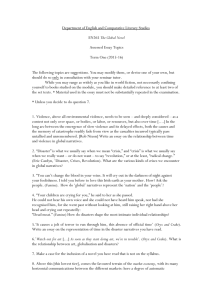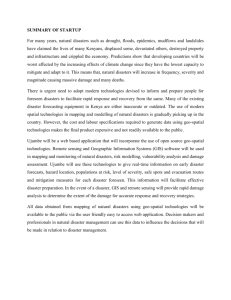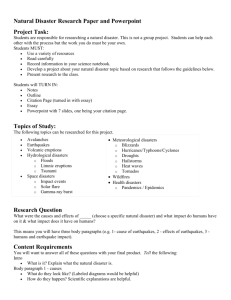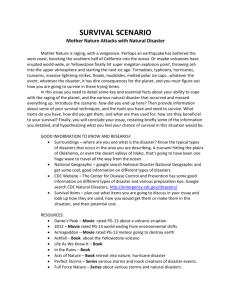Department of English and Comparative Literary Studies EN265 The
advertisement
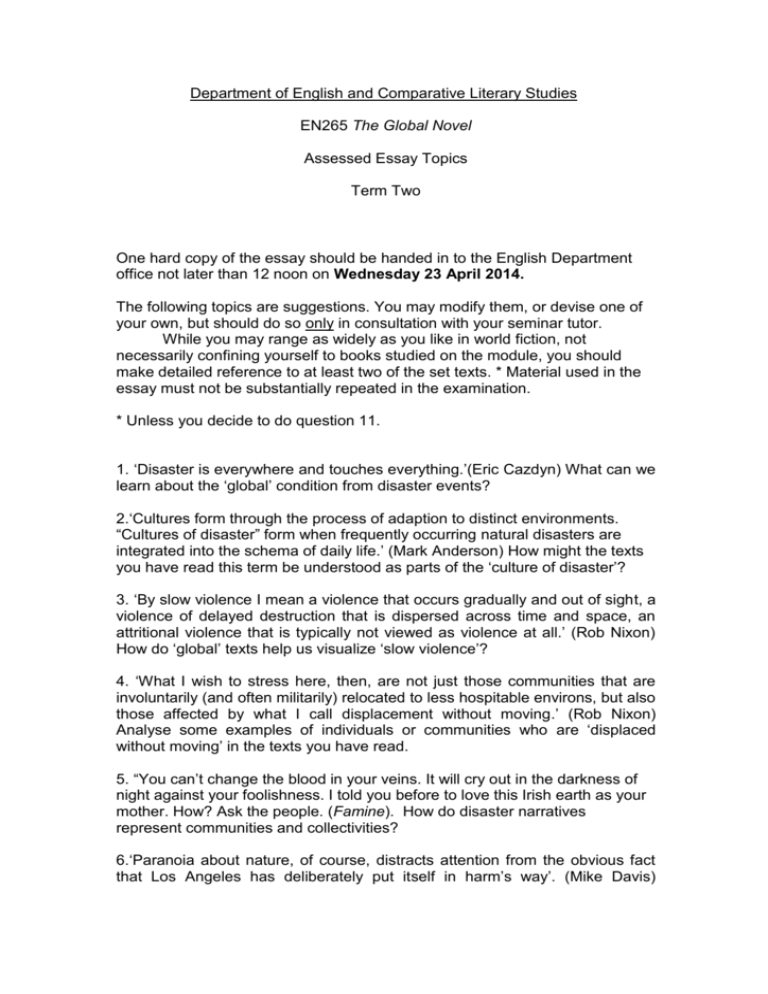
Department of English and Comparative Literary Studies EN265 The Global Novel Assessed Essay Topics Term Two One hard copy of the essay should be handed in to the English Department office not later than 12 noon on Wednesday 23 April 2014. The following topics are suggestions. You may modify them, or devise one of your own, but should do so only in consultation with your seminar tutor. While you may range as widely as you like in world fiction, not necessarily confining yourself to books studied on the module, you should make detailed reference to at least two of the set texts. * Material used in the essay must not be substantially repeated in the examination. * Unless you decide to do question 11. 1. ‘Disaster is everywhere and touches everything.’(Eric Cazdyn) What can we learn about the ‘global’ condition from disaster events? 2.‘Cultures form through the process of adaption to distinct environments. “Cultures of disaster” form when frequently occurring natural disasters are integrated into the schema of daily life.’ (Mark Anderson) How might the texts you have read this term be understood as parts of the ‘culture of disaster’? 3. ‘By slow violence I mean a violence that occurs gradually and out of sight, a violence of delayed destruction that is dispersed across time and space, an attritional violence that is typically not viewed as violence at all.’ (Rob Nixon) How do ‘global’ texts help us visualize ‘slow violence’? 4. ‘What I wish to stress here, then, are not just those communities that are involuntarily (and often militarily) relocated to less hospitable environs, but also those affected by what I call displacement without moving.’ (Rob Nixon) Analyse some examples of individuals or communities who are ‘displaced without moving’ in the texts you have read. 5. “You can’t change the blood in your veins. It will cry out in the darkness of night against your foolishness. I told you before to love this Irish earth as your mother. How? Ask the people. (Famine). How do disaster narratives represent communities and collectivities? 6.‘Paranoia about nature, of course, distracts attention from the obvious fact that Los Angeles has deliberately put itself in harm’s way’. (Mike Davis) Examine the relationship between urban spaces and disasters in the global narratives you have studied. 7. ‘Thus do the Mundas and low castes of Chotti village enter the national economic pattern of independent India. The state has left no spot for them in this pattern [….] But even the excluded must live.’ (Chotti Munda) How and to what effect do disaster narratives tell the story of the State? 8.’Someone once said that it is easier to imagine the end of the world than to imagine the end of capitalism. We can now revise that and witness the attempt to imagine capitalism by way of imagining the end of the world’. (Fredric Jameson) How can narratives of apocalyptic disaster help us understand the global system? 9.‘It causes a jolt of terror to run through him, this absence of official time’ (Oryx and Crake). Write an essay on the representation of time in the disaster narratives you have read. 10.’Watch out for art […] As soon as they start doing art, we’re in trouble’. (Oryx and Crake). What is the relationship between art and global disasters? 11. Make a case for the inclusion of a novel you have read that is not on the syllabus. Your essay must refer to at least one set text by way of comparison and fit the rubric of term one. 12. How do non-fictional narratives incorporate novelistic strategies to represent disasters? 13. ‘Why do I have to be the fucking ghost?’ (Wave) How are loss and grief represented in disaster narratives?
